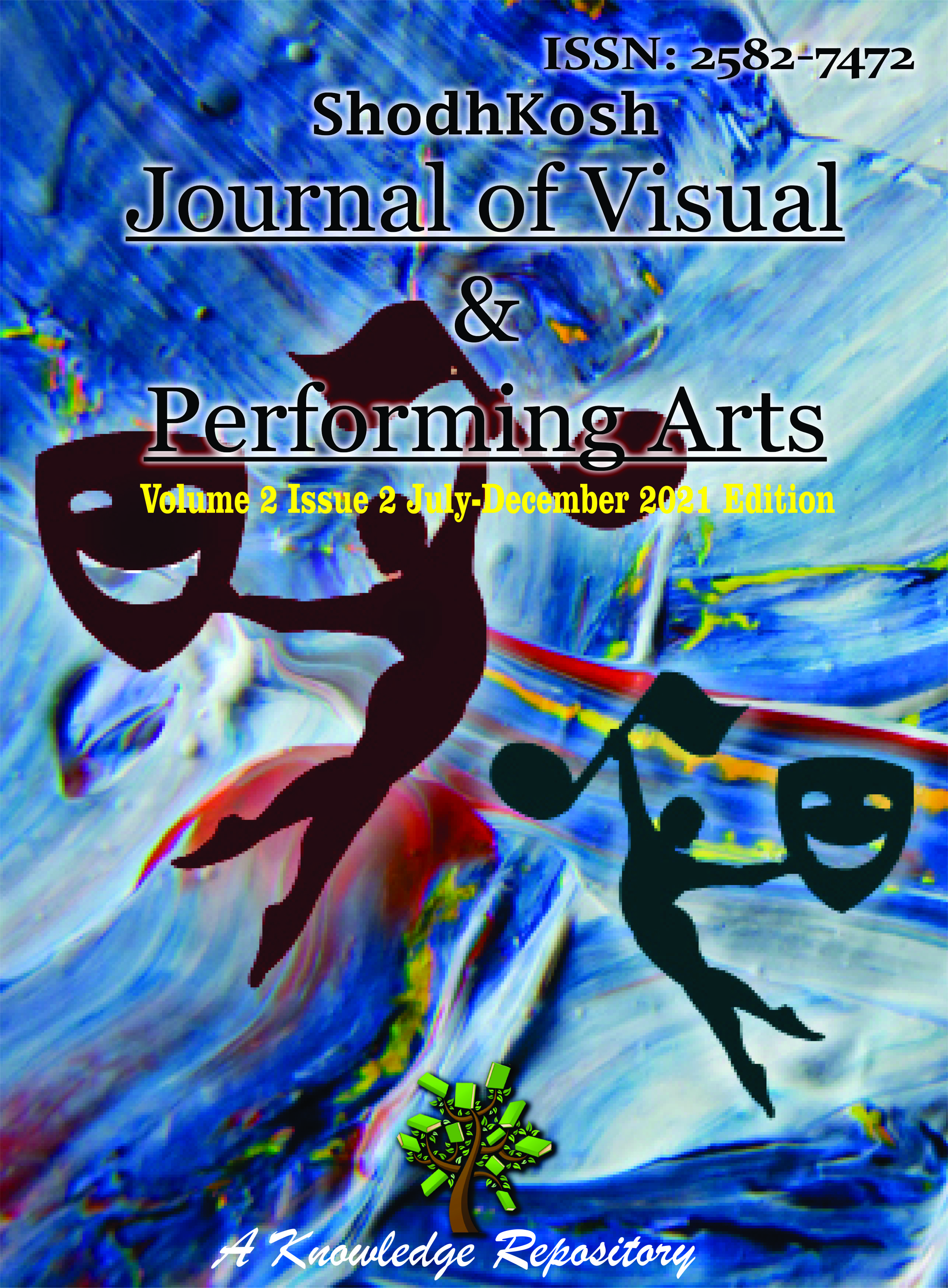BODY AWARENESS: PRIMAL IN HEALTH PROMOTION
DOI:
https://doi.org/10.29121/shodhkosh.v2.i2.2021.6198Keywords:
Body Awareness, Health PromotionAbstract [English]
It is globally accepted that health promotion is prerequisite to any community development because it empower communities with individuals who are healthy and economize community living by saving money, time and energy. Promoting the health of adolescents increases their chances to be healthy adults constituting healthy community. Having an insight into the determinants encouraging health promoting behaviors might assist in adopting strategies to encourage youth to adopt health promoting behaviors. With this aim, present study was carried out to appraise the effect of body awareness on health promoting behaviors. 200 college students were administered Health Promoting Lifestyle Profile II by Susan Walker (1995) and Body Awareness Questionnaire by Shields, et al (1989). It was hypothesized that individuals high on body awareness would be higher on health promoting behaviors as compared to individuals low on body awareness. Findings of the present investigation supported the hypothesis
References
Brani, O., Hefferon, K., Lomas, T., Ivtzan, I., & Painter, J. (2014). The impact of body awareness on subjective wellbeing: The role of mindfulness. International Body Psychotherapy Journal, 13(1), 95-107.
Chitra, J., & Gomes, N. (2019). Effect of Body Awareness Therapy on Depression in Geriatric Population-A Pre Post Experimental Trial. Indian Journal of Physiotherapy & Occupational Therapy, 13(1). DOI: https://doi.org/10.5958/0973-5674.2019.00018.2
Danielsson, L., Papoulias, I., Petersson, E. L., Carlsson, J., & Waern, M. (2014). Exercise or basic body awareness therapy as add-on treatment for major depression: a controlled study. Journal of affective disorders, 168, 98-106. DOI: https://doi.org/10.1016/j.jad.2014.06.049
Dragesund, T., & Raheim, M. (2008). Norwegian psychomotor physiotherapy and patients with chronic pain: patients’ perspective on body awareness. Physiotherapy theory and practice, 24(4), 243-254. DOI: https://doi.org/10.1080/09593980701738400
Fogel, A. (2013). Body Sense: The Science and Practice of Embodied Self-Awareness (Norton Series on Interpersonal Neurobiology). New York: WW Norton & Company.
Gard, G. (2005). Body awareness therapy for patients with fibromyalgia and chronic pain. Disability and rehabilitation, 27(12), 725-728. DOI: https://doi.org/10.1080/09638280400009071
Gard, G., Nyboe, L., & Gyllensten, A. L. (2019). Clinical reasoning and clinical use of basic body awareness therapy in physiotherapy–a qualitative study?. European Journal of Physiotherapy, 1-7. DOI: https://doi.org/10.1080/21679169.2018.1549592
Jurgens, C. Y. (2006). Somatic awareness, uncertainty, and delay in care‐seeking in acute heart failure. Research in Nursing & Health, 29(2), 74-86. DOI: https://doi.org/10.1002/nur.20118
Landsman-Dijkstra, J. J., van Wijck, R., Groothoff, J. W., & Rispens, P. (2004). The short-term effects of a body awareness program: better self-management of health problems for individuals with chronic a-specific psychosomatic symptoms. Patient Education and Counseling, 55(2), 155-167. DOI: https://doi.org/10.1016/j.pec.2004.02.014
Lundwall, A., Ryman, A., Sellius, A. B., & Mannerkorpi, K. (2019). Pain requires processing–How the experience of pain is influenced by Basic Body Awareness Therapy in patients with long-term pain. Journal of Bodywork and Movement Therapies, 23(4), 701-707. DOI: https://doi.org/10.1016/j.jbmt.2019.02.006
Pennebaker, J. W. (2012). The psychology of physical symptoms. Springer Science & Business Media.
Price, C. J., & Hooven, C. (2018). Interoceptive awareness skills for emotion regulation: Theory and approach of mindful awareness in body-oriented therapy (MABT). Frontiers in psychology, 9, 798. DOI: https://doi.org/10.3389/fpsyg.2018.00798
Seal, B. N., & Meston, C. M. (2020). The impact of body awareness on women’s sexual health: a comprehensive review. Sexual medicine reviews, 8(2), 242-255. DOI: https://doi.org/10.1016/j.sxmr.2018.03.003
Sertel, M., Şimşek, T. T., & Yümin, E. T. (2021). The Effect of Body Awareness Therapy on Pain, Fatigue and Health-related Quality of Life in Female Patients with Tension-type Headaches and Migraine. West Indian Medical Journal, 69(2).
Shields, S. A., Mallory, M. E., & Simon, A. (1989). The body awareness questionnaire: reliability and validity. Journal of Personality Assessment, 53(4), 802-815. DOI: https://doi.org/10.1207/s15327752jpa5304_16
Skatteboe, U. B., Friis, S., Hope, M. K., & Vaglum, P. (1989). Body awareness group therapy for patients with personality disorders. Psychotherapy andPsychosomatics, 51(1), 11-17. DOI: https://doi.org/10.1159/000288128
Tones, K., & Tilford, S. (2001). Health promotion: effectiveness, efficiency and equity. United Kindom: Nelson Thornes Ltd.
Van Der Maas, L. C., Koke, A., Bosscher, R. J., Twisk, J. W., Janssen, T. W., & Peters, M. (2016). Body Awareness as an Important Target in Multidisciplinary Chronic Pain Treatment. The Clinical Journal of Pain, 32(9), 763-772. DOI: https://doi.org/10.1097/AJP.0000000000000320
Van Zuuren, F. J., & Dooper, R. (1999). Coping style and self‐reported health promotion and disease detection behaviour. British Journal of Health Psychology, 4(1), 81-89. DOI: https://doi.org/10.1348/135910799168489
Walker S.N., Sechrist, K., Pender, N. (1995). Health Promotion Lifestyle Profile II. College of Nursing, University of Nebraska medical Center, Omaha, NE.
Downloads
Published
How to Cite
Issue
Section
License
Copyright (c) 2021 Dr. Manika Prabhakar, Dr. Mamta Sharma

This work is licensed under a Creative Commons Attribution 4.0 International License.
With the licence CC-BY, authors retain the copyright, allowing anyone to download, reuse, re-print, modify, distribute, and/or copy their contribution. The work must be properly attributed to its author.
It is not necessary to ask for further permission from the author or journal board.
This journal provides immediate open access to its content on the principle that making research freely available to the public supports a greater global exchange of knowledge.




























